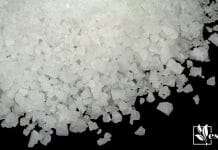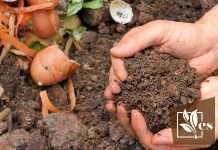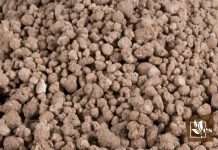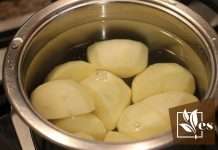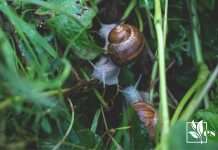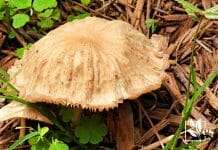As a seasoned gardener, I understand that preparing a garden for winter is crucial for the health and productivity of the following year’s growth. Winterizing your garden protects plants from the harsh elements and can greatly boost their resilience. It involves a series of steps that you can perform to ensure your garden remains robust throughout the cold season.
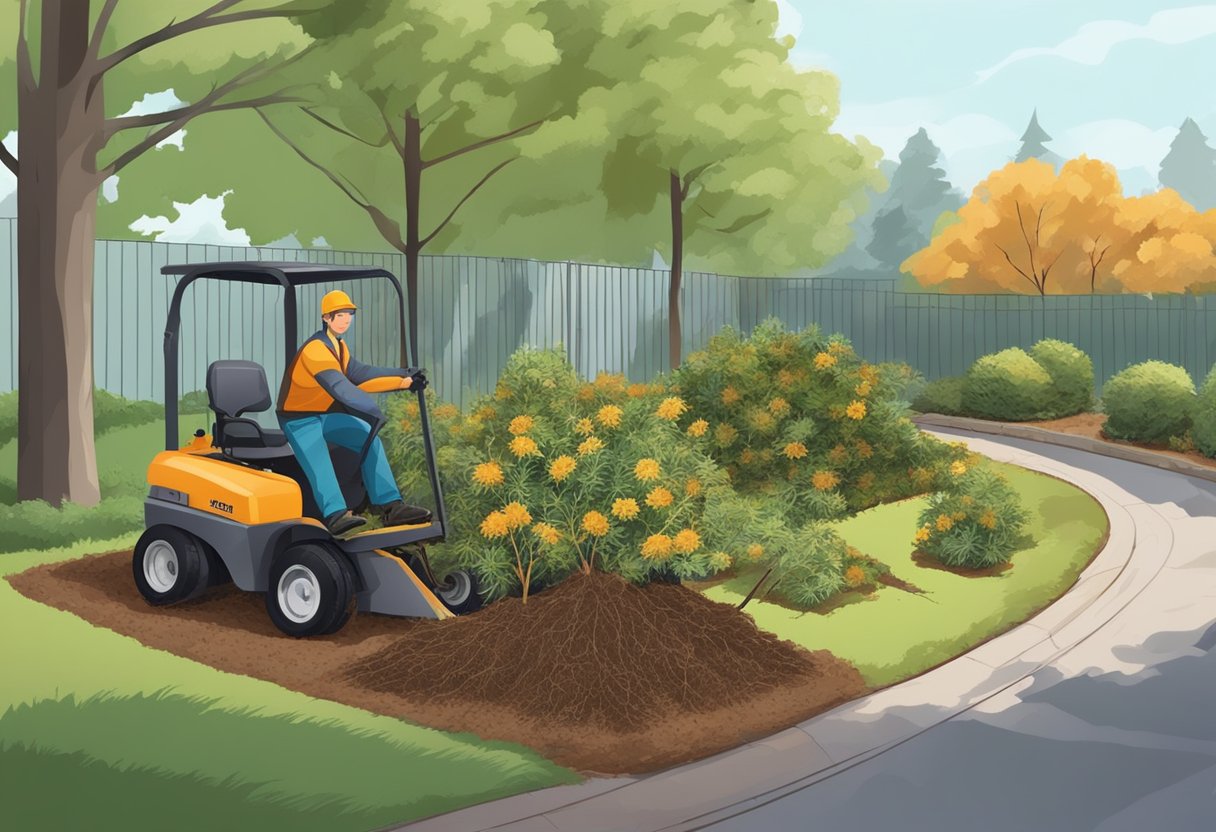
Winter preparation starts with harvesting and removing any sensitive annuals that can’t withstand frost. I make sure to clear out these plants, along with all the debris and fallen leaves, to prevent the spread of disease and pests next spring. It’s also important to protect the soil; a healthy garden begins with healthy soil.
I’ve learned that mulching is integral to safeguarding perennials and the root systems of trees and shrubs. I apply a generous layer of mulch around their bases to act as an insulator against freezing temperatures. This helps to moderate the soil temperature, keeping it consistent and preventing heaving, which can expose roots to the chilly air.
JUMP TO TOPIC
Preparing Garden Beds and Soil for Winter
As the growing season comes to an end, it’s crucial to prep your garden beds and soil for the cold months ahead to ensure a healthy start in the spring.
Clean Up and Remove Debris
I always begin by clearing my garden beds of any spent plants and debris. This involves pulling out old vegetable plants and annuals, and raking up fallen leaves. The goal is to remove any plant matter that can harbor pests or disease over winter.
- Harvest remaining vegetables
- Pull out non-hardy plants before frost
- Rake and remove fallen leaves
- Dispose of diseased plant material
Pruning Perennials and Shrubs
Next, I assess the health of my perennial plants and shrubs. I prune dead or diseased branches to reduce the risk of infection and damage from snow and ice. I cut back herbaceous perennials to soil level after frost to encourage healthy growth in the spring.
Amending Soil with Organic Matter
Before the ground freezes, I enrich the soil with organic matter. I add a mixture of compost and well-rotted manure to supply essential nutrients. Incorporating organic matter like shredded leaves into the soil also enhances its structure and fertility.
💥 I make sure to: Amend soil with compost, manure, and leaves to boost nutrients and improve texture.
Mulching to Protect from Frost and Erosion
Finally, I apply a thick layer of mulch over my garden beds. Mulch acts as an insulator, protecting plant roots from drastic temperature changes and reducing the risk of soil erosion throughout winter.
- Use organic mulches such as straw, bark, or shredded leaves
- Apply a 2 to 4-inch layer to effectively insulate soil and roots
- Avoid piling mulch directly against plant bases to prevent rot
Protecting Plants and Bulbs from Winter Damage
When winter is on the horizon, ensuring the survival of various perennials, tender bulbs, and container plants is critical. Snow and frost can be harsh, but with the right steps, your garden can emerge unscathed from the chill.
Covering with Straw and Leaves
For many plants, a layer of straw or chopped leaves provides insulation from the cold. Here’s how I do it:
- Lay down 2-4 inches of straw over the soil to protect bulbs like dahlias and gladioli.
- Surround roses with chopped leaves to shield them from severe temperatures.
I avoid piling material directly against the base to prevent rot and disease. I find straw preferable over leaves for larger areas because it’s less likely to mat down.
Using Protective Structures
To safeguard specific plants, I construct protective structures. Here’s what works for me:
- Cardboard Collars: Wrapping cardboard around the base of small trees and shrubs prevents frost damage.
- Chicken Wire Cages: I fill these with leaves or straw and place them around my tender plants to buffer against the cold.
Creating a barrier with these methods is like adding an extra layer of clothing in freezing temperatures; it helps to keep your plants cozy.
Caring for Container Plants
Container plants are especially vulnerable. This is how I manage their winter care:
- Move them indoors: Tropical varieties find refuge in my home where it’s warm.
- Group pots together: For hardier types, clustering pots in a sheltered spot like against a wall minimizes exposure to cold winds.
- Utilize mulch: A top dressing of mulch retains soil warmth and wards off frost.
For containers that must stay outside, I make sure they’re elevated off the ground to avoid water logging and increased frost risk.
Lawn and Garden Maintenance Tips for Autumn
As we transition into autumn, it’s crucial to adjust your garden care to set the stage for a robust spring. My focus is on proper fertilization, mowing strategies, and season-appropriate planting. These actions will ensure a healthy garden that can withstand the colder months.
Fertilizing and Watering Regimens
In autumn, I scale back on watering since evaporation rates are lower and plants require less moisture. However, I never let the soil become bone-dry. A deep, infrequent watering schedule promotes healthy root growth. I apply a potassium-rich fertilizer to strengthen plant cells and increase disease resistance, being careful not to over-fertilize which can trigger growth that will not survive the winter.
Lawn Mowing and Leaf Removal
I raise my mower blade to leave the grass longer, around 2.5 to 3 inches, aiding in photosynthesis and root development as the temperature drops. Regular mowing is key, but I ensure that it’s not too short to prevent stress on the lawn. I diligently rake up fallen leaves, which can smother grass, harbor pests, and foster disease if left unattended. Aerating the lawn in autumn allows water and nutrients to penetrate deeper into the soil, promoting a healthier lawn come spring.
Planting Cool-Season Annuals and Vegetables
Autumn is the perfect time for me to sow the seeds of cool-season annuals and vegetables. I plant kale, peas, and other cold-tolerant vegetables that can thrive in the cooler weather. To protect the garden beds and enrich the soil, I plant a cover crop such as clover, which I’ll turn over in the spring to add nutrients back into the earth. Additionally, I remove weed seeds now to prevent their germination and spread in the garden next season.
Planning for the Next Growing Season
In the quietude of early fall, I recognize that success in my garden’s future hinges on the strategies I devise now. This is when I renew my garden’s vitality and establish a blueprint for the coming year.
Selecting and Preparing New Additions
As a gardener, my first task is selecting which new plants to introduce into my garden. Clean up is important; it involves removing spent annuals and any diseased or pest-ridden plant material, ensuring it doesn’t end up in my compost. This step reduces potential problems in the next growing season.
- Resistance to pests and diseases: Reduces the need for interventions later.
- Nutritional needs and compatibility: I group plants with similar needs to simplify soil amendments.
- Beneficial partnerships: Companion planting for mutual support between plant species.
Then, I add organic material like mulch or cover crops to rejuvenate the soil and improve its structure and fertility.
Strategizing Plant Protection and Renewal
Protection and renewing strategies are crucial for my perennials, especially woody plants. Pruning trees and shrubs are done with care; I ensure they’re shaped to withstand winter and promote healthy spring growth.
I use mulch to insulate plant roots, and strategically place it around my garden to protect against frost heaves. Incorporating organic material into the soil now rejuvenates it and makes for a more vibrant garden come spring. Here’s how I protect and renew my plant life:
| Task | Purpose | Timing |
|---|---|---|
| Adding Mulch | To insulate and protect plant roots | After the first hard frost |
| Pruning Woody Plants | To remove diseased wood and shape the plant | Late winter before the buds swell |
| Incorporating Organic Material | To rejuvenate the soil for next year’s plants | Early fall to allow breakdown over winter |
Lastly, I don’t forget about my houseplants; I check them for pests and give them a good clean before bringing them indoors, ensuring they continue to thrive in the warmer quarters of my home.


